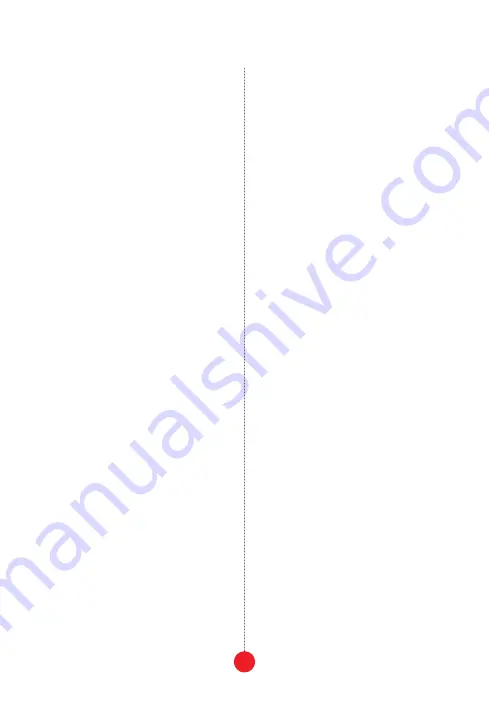
8
limiter state (on/off). If the slew limiter is active
on the given step, turning on the probability
function enables it to influence the deactivation
of the slew limiter and vice versa. The degree of
probability of change is adjusted globally with
the probability knob.
step 3 • step prob button activates the proba-
bility function for the gate/trigger of the edited
step.
step 4 • patt prob button activates the prob-
ability function for turning the pattern on and
off for the given step.
step 5 • skip button activates the skip func-
tion. When skip is turned on, deactivating a
step excludes it from the sequence, resulting in
a shorter sequence.
step 6-8 buttons select the type of signal pres-
ent at the gate out. When no buttons are lit, the
output signal is a gate. Its length is a direct copy
of the width of the external clock pulse (with the
internal clock, it lasts for half the length of the
step). When the step 6 • trig button is active,
the output of the gate out changes to trigger.
step 7 • gate half button activates a gate
with a duration of half the step length (or half
the division resulting from the active pattern).
step 8 • gate merge button button activates a
legato style gate lasting the entire length of the
step that merges with the next step’s gate.
PATTERN EDITINg
As stated above, each step can have an unique
pattern. To activate and edit a pattern, enter
pattern mode by pressing the patt button then
select a step by pressing one of the eight step
1-8 buttons. The button lights up, but no change
is audible yet. Hold the step 1-8 button for one
second to enter edit mode. To edit multiple pat-
terns at the same time, press and hold the first
pattern button, and then push the others to be
edited. The selected steps light up green.
The default pattern has eight steps with only
the first step active. To change that, press and
hold the shift button, and choose the desired
last pattern step using the step buttons. The
length of a given pattern is indicated by a red
backlight.
Now you are ready to activate pattern steps
the same way as steps in the main sequence by
pressing the step 1-8 buttons. Buttons of active
pattern steps light up yellow. To exit the pattern
editor, press the button of the mode you wish to
exit to, either patt or step.
In the pattern mode, you can choose the pat-
tern playback mode for each step. To do that,
press and hold shift and press a step button of
your choosing. There are two options: a red back-
light indicates the default div pattern mode in
which the entire pattern lasts for the duration
of a single main sequence step. Therefore, each
pattern step lasts for the duration of a fraction of
the duration of the main sequence step (depend-
ing on the number of pattern steps). A yellow
step backlight indicates mult pattern mode in
which each pattern step lasts for the duration
of one clock cycle. Therefore, the main sequence
step lasts for as many clock periods as there are
steps in the pattern for the given step. This setting
is unique for each step.
In pattern mode, the steps that have been pro-
grammed with their own unique patterns, but
have not been activated, are dimly lit with the
color indicating the pattern playback mode (dim
yellow for mult pattern mode and dim red for






























